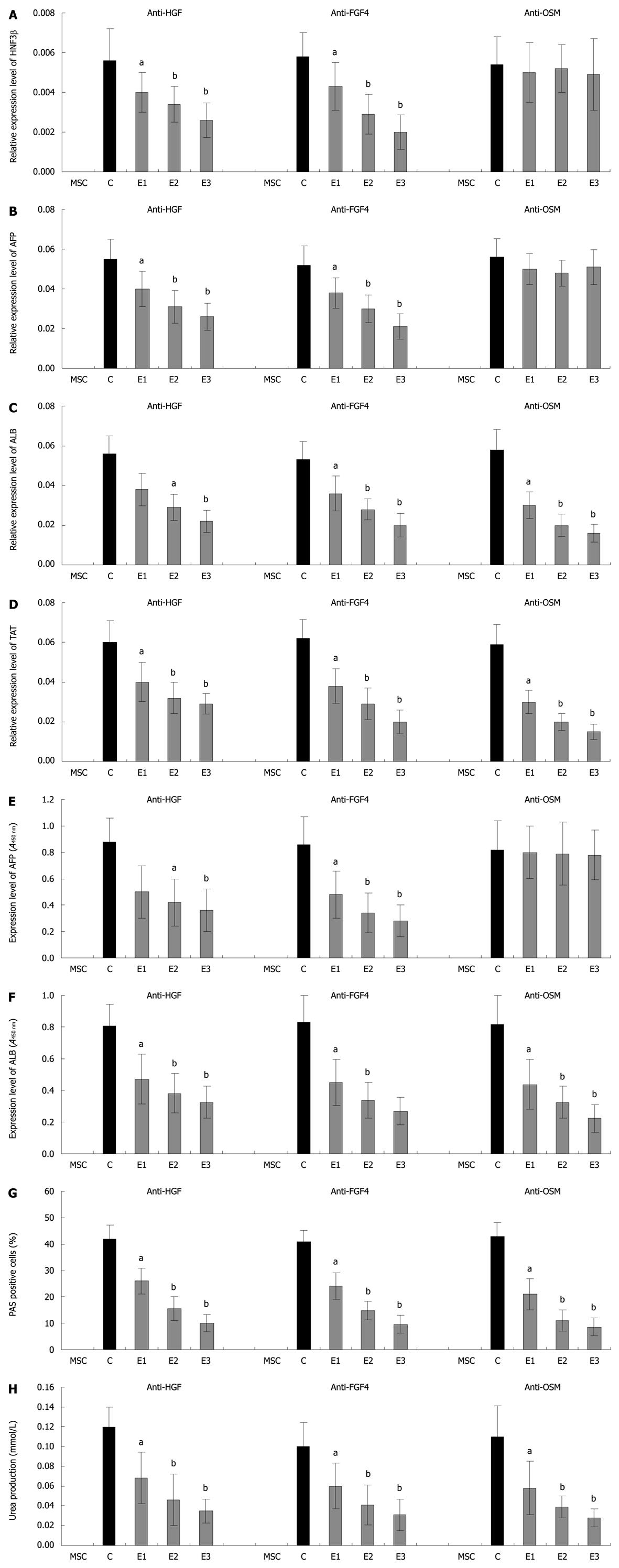Copyright
©2010 Baishideng.
World J Gastroenterol. Jul 14, 2010; 16(26): 3267-3278
Published online Jul 14, 2010. doi: 10.3748/wjg.v16.i26.3267
Published online Jul 14, 2010. doi: 10.3748/wjg.v16.i26.3267
Figure 4 Effects of FGF-4, HGF and OSM in hepatic differentiation.
A number of depletion experiments using different combination of antibodies were conducted, and the expression of both liver-specific markers and function was analyzed. A-D: The expression of both the early liver-specific markers (HNF3β and AFP) 10 d after induction and the late liver-specific markers 20 d after induction (ALB and TAT) at mRNA levels detected by real-time PCR; E, F: The expression of AFP 10 d after induction and ALB 20 d after induction at protein levels detected by ELISA; G: Analysis of intracellular glycogen accumulation by PAS staining on day 20 after induction; H: Urea production by differentiated cells on day 20 after induction. MSC group: Control MSCs cultured in medium A with PBS; C group: MSCs induced with liver-injury conditioned medium with non-specific IgG; E1-E3 groups: MSCs induced with liver-injury conditioned medium and different concentrations of specific antibodies (E1: 1:500; E2: 1:200; E3:1:100). aP < 0.05, bP < 0.01 vs C group.
- Citation: Dong XJ, Zhang H, Pan RL, Xiang LX, Shao JZ. Identification of cytokines involved in hepatic differentiation of mBM-MSCs under liver-injury conditions. World J Gastroenterol 2010; 16(26): 3267-3278
- URL: https://www.wjgnet.com/1007-9327/full/v16/i26/3267.htm
- DOI: https://dx.doi.org/10.3748/wjg.v16.i26.3267









